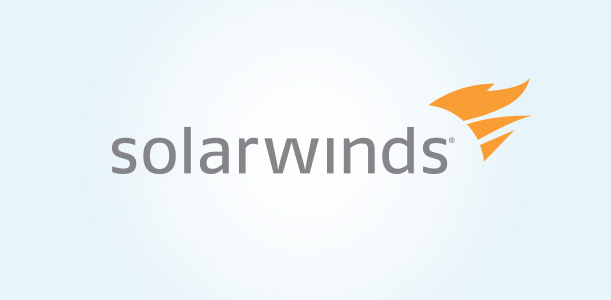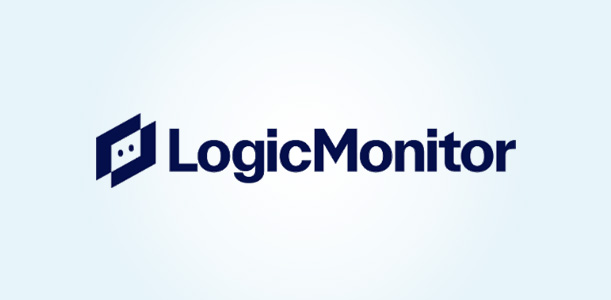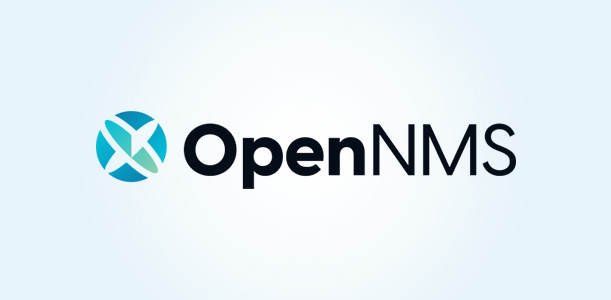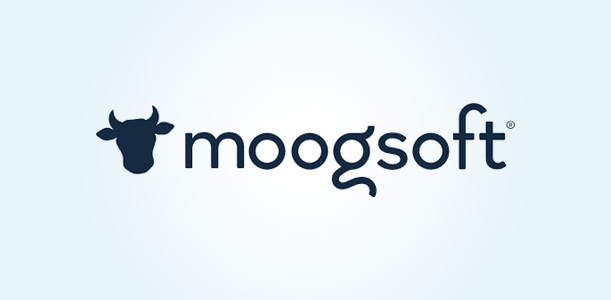NOC Monitoring Tools and Software
NOC management has five essential elements known as tools which are a vital element toward improvement. You need to know which tools will give you the best return on the investment into outsourcing to companies such as ExterNetworks. There are many ways that these tools can help you to give your team more control over tasks while putting the Network Operations Center (NOC) in a position to be an exclusive resource for the IT department.
The Five Essential Features of Network Operation Center (NOC) Tools:
-
Incident Tracking through a Ticketing System
The use of a ticketing system will enable all issues to be kept track of by the urgency, severity and who is assigned to handle a specific task. Issues that arise tickets are created to describe the issue so that it can be processed and assigned to the correct person or department. When the person or department assigned to a task cannot complete it, the ticket will move to the next level for correction. The best service can be provided to customers and the tasks of each shift prioritized by making all pending issues known.
-
Centralization of Knowledge
A centralized place for all documentation and knowledge that is readily accessible to every team member is known as the knowledge base. It should be a fluid source of information that is always up to date with lessons from incidents so they can be used to prevent the same thing from happening in the future. The experiences should be referenceable to the entire company and used in making future improvements to the organization.
-
Daily and Monthly Reports for Measuring Incident Severity and Improvement Progress
Reports should be created on both a daily and monthly basis. The last 24 hours should be included in the daily report with every major incident included. All incidents that were resolved should have the root cause listed. The reports help the NOC managers, shift leaders, and the entire IT department knew about the activities of the NOC services and significant incidents. The progress of the team can be measured when the monthly report is made from the daily reports. Trends in performance will be seen more efficiently, and areas that can use improvement will be identified speeding up the process.
-
Monitoring – NOC has Two Monitoring Process Types That are Relevant to It:
- Infrastructure Monitoring – Environment of the data center, network, or servers make up the monitoring of the infrastructure. This allows for the entire system to be protected from threats by detecting them early.
- User Experience Monitoring – problems are replicated to find practical solutions by simulating the activities and behavior of users to see the resulting actions associated with them. Actual issues that users run into can be duplicated to find ways to fix them and to prevent them in the future making the experience more pleasing to everyone.
-
Automation of the IT Process
Time is freed up for more strategic projects through the automation of repetitive daily tasks. Level 1 teams can deal with restart services, clean-up of disk space and resetting of passwords. MTTR is also reduced in critical incidents during IT Process Automation. Essential events of the system can be handled during off hours through the triggering of specific workflows.
The benefits of having all of these services outsourced and automated assists with expediting the process of problem-solving. Staff is freed up to do other things when the issues with the network and that arise for customers is handled remotely. User experiences are made smoother through the improvements that monitoring creates.
How do you Choose the Right Tools for your NOC?
Different network monitoring tools are available today; some are free, while others are paid. Each company is different, so no single tool will suit every business, and you need to choose one that suits your needs. Here are some factors that you should take into consideration when looking for a network monitoring tool:
- What type of monitoring do you want? Do you want real-time tracking or historical data?
- How much time do you have to manage your network? If it takes too long, then you may not be able to use this tool effectively.
- Are you looking for a simple solution or something more complex?
- Is your budget limited?
- Does your business require 24/7 monitoring?
- Do you need to monitor multiple networks at once?
- Do you need to manage wireless networks?
- Do you need to perform troubleshooting?
- Do you need to integrate with other systems such as email, CRM, ERP etc.?
- Do you need to update the software regularly?
- Do you need to purchase licenses for each user?
What Should you Look for When Choosing Network Monitoring Tools and Software?
Network monitoring is critical to any IT infrastructure, but it can also be difficult to get it right. It requires understanding what you want from your network monitoring tool and some technical knowledge about how to use it effectively.
To run a successful business, you must ensure that your network works properly. In order to achieve this, you need to invest in network monitoring tools and software. These tools allow you to monitor the performance of your network and alert you when there is anything wrong, and they also provide you with detailed reports about the status of your network.
First, you need to decide whether you want a standalone solution or a hosted service. A standalone solution will give you complete control over the configuration of your own system, while a hosted service means that the vendor takes care of everything for you. You may find that the cost savings associated with using a hosted service outweigh the extra time required to configure the tool yourself.
Second, you must determine if you want an on-premise or cloud-based solution. On-premises solutions are installed in your data center, while cloud-based solutions reside on a remote server. Cloud-based solutions can be more flexible than on-premises solutions because they allow you to scale up or down as needed. However, you must pay for the additional resources used by cloud-based solutions.
Third, you need to consider the functionality you require from the monitoring tool. Some vendors offer only basic functions such as performance metrics, whereas others provide advanced features like intrusion detection. The level of support offered by the vendor is also important. Working with a vendor with experience managing large networks is best if you have a complex environment.
Finally, you need to evaluate the vendor’s reputation. Reputation is based on customer feedback, so you should check online reviews before making purchase decisions. Vendors with poor reputations tend to disappear quickly, which makes them challenging to locate.
The Best Network Monitoring Tools
SolarWinds

SolarWinds is a leading provider of software for managing networks. Its products include both on-premises solutions and cloud-based services. They use standard protocols such as SNMPS and WMI to monitor and manage their clients’ infrastructures.
It’s got a lot of capabilities, including autodiscovery, which means it can compile an asset inventory and automatically draw up a network topology. That way, even if someone manages to get into your internal network, they won’t be able to see anything sensitive. And because it’s on-premises, so long as your company controls access to the server and has the security locked down, it doesn’t need to worry about losing its assets to the outside world.
There are some downsides to the use of SolarWinds. For instance, the large number of hacks prompts some severe cybersecurity issues. However, as news of the vulnerability has progressed, it seems that the problem won’t last for too long.
Beyond the high price tag of buying and licensing the software itself, there’s an extra expense of having to manage more on-premises or virtual systems specifically designed for your network management needs.
The third big ‘upfront’ cost of SolarWinds isn’t configuring and optimizing SolarWind for a specific environment; instead, it’s setting up and optimizing SolarWinds for use within an organization. Enterprises, communications service providers, OEMs, and others with extensive IT and/or infrastructure should consider these additional ‘up front’ expenses when evaluating SolarWinds.
LogicMonitor

LogicMonitor is a web-based monitoring system that differentiates itself from Solarwinds by using “collectors”. These tiny programs run on servers, connect to devices, and communicate back to the web over TLS — a method that provides reliable, secure communications. However, the web and Internet resources that gather your data don’t have direct access to them, which is a huge plus.
While LogicMonitor shares some similar features with SolarWinds, your company probably won’t need to optimize them because they’re already optimized for you.
LogicalMonitor has proven to be an attractive tool to those “lifting and shifting” their physical on-premises resources to the public clouds. It can handle on-premises and public clouds while residing within the public clouds themselves. Because it’s a public cloud-native, it’s one less piece of infrastructure you must move. Once again, this is especially beneficial to companies moving from on-premises to mostly or entirely public cloud based environments.
Cloud-native systems offer several advantages over traditional server-based solutions. They’re often faster to deploy and scale-out. They also provide better security because they’re not constrained by physical hardware. Developers must interact with vendors directly.
And then there’s the price. Those monthly subscription fees for some of these tools can be quite expensive per-element basis. So, before deciding which tool to use, you might want to weigh the costs against the benefits carefully.
OpenNMS

OpenNMS is an open-sourced tool on our list. It offers one significant benefit: You don’t need to invest any money upfront. However, depending on your needs and the expertise required, there might be associated costs.
With respect to capability, OpenNMS has almost everything your company would need out of the gate. Still, larger companies will have to spend some time configuring the product to be able to use its full potential. It’s a lot easier to set up and operate than SolarWinds and LogicMonitor, though.
OpenNMS can either be used as a stand alone system or it can be used with minions. Minions are similar to logic monitor collectors, and they collect data from devices and send it back to an OpenNMS box, where it gets analyzed.
With this option, it is possible to deploy OpenNMS agents on any number of physical or Virtual Machine hosts. In addition, these agents can be configured to talk to each other directly without requiring an intermediate agent. For instance, if you have multiple server hosts in different areas of your environment, you can configure one OpenNMS instance as a central monitoring station and another as a collection device for data collected by the various hosts. Alternatively, if you manage a large-scale deployment of OpenStack, you can install OpenNMS agents on your OpenStack hosts and then connect those agents to your OpenStack dashboard.
Here, the main idea is that OpenNMS provides much flexibility for configuring your monitoring environment. However, that flexibility comes at the price of configuring everything yourself.
BigPanda

BigPanda is a leading incident management solution for enterprise organizations. It enables them to detect and resolve issues before they become major disruptions.
BigPanda offers an easy way for companies to monitor their infrastructure. They have many integrations and are compatible with many existing monitoring, changer, topology, collaboration, and ticketing software.
It requires far less effort than most other platforms of its kind to get to the point that information flows through it. However, it takes some time for the AI to learn to recognize specific patterns and improve its decision-making ability.
As we started looking at different AIOps platforms when we first decided to implement one, we found ourselves drawn to BigPanda because it had features well aligned with our needs. So here’s a quick rundown of why we chose BigPanda.
Scalable price: We charge per device rather than an upfront fee for each client, which makes scaling our service easy.
We enable our customers to use their ML capabilities to augment and enhance their decision-making rather than stepping in to decide for them. The service’s impressive analytics capabilities help us identify patterns and suggest recommendations to which we can apply expert knowledge to verify, revise, and/or refine before acting. As a result, we prevent potentially harmful choices made by the system while still delivering precious insights to our humans to act upon.
Moogsoft

Moogsoft is an observability solution designed for developers and operations engineers. It provides intelligent signal reduction, alert correlation, and real-time monitoring capabilities, including metric collection and anomaly identification.
Moogsoft accelerates incidents by providing out-of-the-box workflows and integrations. We evaluated Moogsoft as an event correlation solution for our own workflow back when it was still an on-premises product.
It had an excellent user interface (UI) and powerful API and could not correlate events across multiple systems. Today, we consider it a solution that organizations can deploy in their data centers and manage through its intuitive UI. Its API offers more than what we need in our use cases.
At the time of this review, Moogsoft was an application that had been around for quite some time. While it did not offer any new features, it was still a useful piece of software. In addition, it provided a lot of functionality that made it easy to create custom workflows. Unfortunately, Moogsoft has recently released a new version of its software, breaking it down into smaller components. These components can then be used separately, allowing users to customize them according to their needs. Overall, the new version of Moogsoft offers a lot of improvements, including better performance and increased security.

